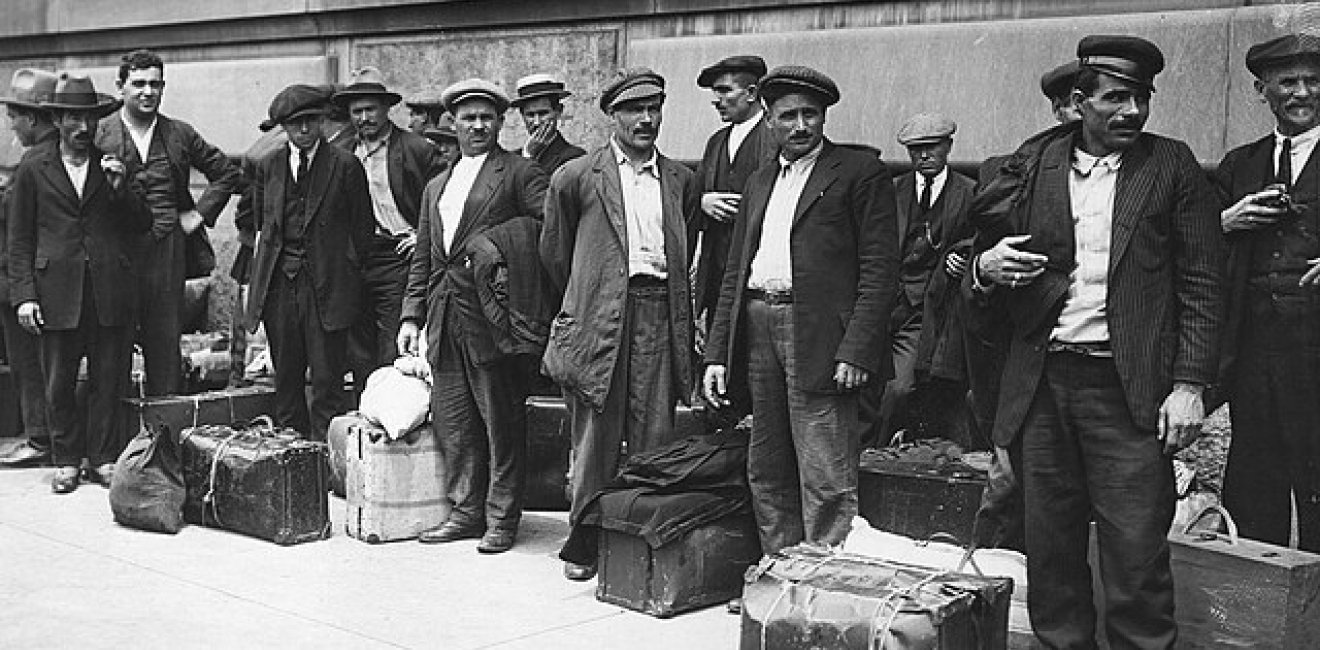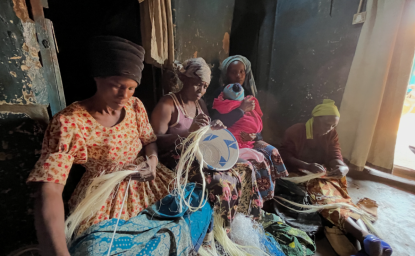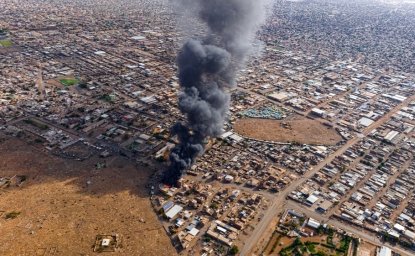For as long as states and international institutions alike have had policies on forced displacement, from the late 19th century forward, they have thought of refugees above all as workers. At moments, this has redounded to refugees’ benefit – for instance, the late Ottoman state’s decision to distribute land and resources to refugees in border zones, on the grounds that they would act as useful symbols and channels for state control. At other times, it has meant draconian restrictions on refugee movement and limitations on refugee rights, as in the United States’ refusal to take in Jewish refugees fleeing Nazi Germany in the mid-1930s on the grounds that they would upset the delicate balance of the labor market and might amplify undesirable forms of labor activism. The association of refugee and labor politics, with its wide variety of outcomes, has marked national and international approaches to refugee policy since the beginning of the age of mass displacement. Does it hold lessons for the present day?
Refugee and labor policy before 1945
Historically speaking, the assumption that refugees must be treated as potential workers above all has had two primary manifestations. One is that forcibly displaced populations might be made to serve as convenient, disposable, cheap labor wherever it was needed – most often, in colonial or neocolonial settings where rapid industrialization meant a need for unskilled labor. This was particularly the case in the interwar era, when the new League of Nations made its refugee office into a kind of employment clearinghouse matching private companies with menial workers – sending Armenians and Russians and Assyrians to work in plantations and mines and factories across the colonial sphere. The idea was tried further in the era of the early United Nations, whose first experiments with relief in Palestine included the repurposing of displaced Palestinians as foot soldiers in the mass, American-sponsored industrialization of the Middle East (hence the “Works” part of the United Nations Relief and Works Agency, the agency that dealt with Palestinian refugee populations after the expulsions of 1948). Many of these efforts met with massive refugee resistance, due not only to the menial and poorly remunerated nature of the jobs on offer but also the necessity for removal to take them up, usually to remote and difficult locations far from refugees’ points of origin or desired final destinations. It would seem, then, that it was not so easy to convince refugees to remake themselves as a conveniently undemanding and mobile labor force in the interests of the world’s colonial rulers and, after 1945, emerging superpowers. The first lesson, perhaps, of early attempts to remake refugees as laborers was that refugees, however disempowered, nevertheless retained the capacity to make or break such plans; their active inclusion and participation in such plans would be crucial.
The other main manifestation of this assumption that refugees were to be understood in terms of their labor was the abiding worry that displaced people would upset the labor market if allowed to move around at will. It was this worry that led both the United States and Western Europe to erect barriers to refugee entry from the early 20th century onward, culminating in the exclusionary immigration regimes of the post-WWI era and the so-called “Nansen Passport” that allowed in refugees to signatory states only on a guest-worker basis, always subject to expulsion should labor conditions change. The Nansen Passport has sometimes been remembered with nostalgia, and proposals to reinstitute some form of it abound – probably because many who received it were, thanks to their proximity to whiteness and the relatively thin nature of state migration surveillance in most of the countries in which it applied, able to find permanent (if informal) settlements in new countries. But as a political solution, its main consequence was to stamp refugees as a disposable form of labor and citizenship as a right reserved for others, and to reinforce the concept that state sovereignty meant a right to limit entrance (an assumption that was by no means well established in international law even by 1920). The limits of the Nansen Passport were the consequences of ever-increasing worries about the uneven distribution of workers and work, and in the end, it served mainly to reinforce patterns of exclusion.
Anxieties about labor spanned the political spectrum; unions in the United States, for instance, were continually debating the possible effects of large-scale immigration on wages and negotiating conditions throughout the 20th century. It was not only the wealthiest states who worried about refugee impact on labor markets; developing nations expressed similar concerns, with countries like Brazil and Paraguay putting restrictions on the entrance of refugees as a response to concerns about local worker conditions and the state of the labor market. The consequence was that refugees were often kept in limbo, either via temporary legal status that could be withdrawn at any time or simply segregated from employment via a more straightforward (and, for states, expensive) form of containment in camps or other restricted settlements.
Neither of these approaches, in the end, tended to benefit either refugees or receiving countries, who shouldered the significant expense and the moral burden of restriction and exclusion without offering any substantial protections for their own populations of workers. From a policy perspective, perhaps the greatest success story was the pre-WWI United States, which (apart from a punitive regime of exclusion around “Asiatics” dating from the late 19th century) tended towards an essentially open border. Prior to the imposition of immigration restrictions in 1921 and 1924, some 98% of would-be immigrants who came through Ellis Island were allowed entrance. Here, too, refugees were viewed as potential laborers (one of the few rationales for exclusion was a perceived likelihood of ending up on public funds) but their entrance was not premised on any specific kind of work or time frame, and no particular effort was made to match immigration to labor needs. Generally, these generous – even essentially open – border policies were not perceived either at the time or in retrospect as having had particularly deleterious effect on working conditions for extant citizens. We should also note that the systems of monitoring and exclusion that replaced them were expensive, complicated, and burdensome. Checks and controls like the US Border Patrol, established for the first time in 1924, required totally new levels of political commitment and financial outlay from the national governments of destination countries.
The United States, then, was rapidly becoming the global center for consideration of international as well as national policy vis-à-vis displaced people. This recentering became more evident following the total failure of more than thirty countries who met at Évian in 1938 to come up with any kind of answer to the mass Jewish displacement unfolding in central Europe. When Franklin Roosevelt came back to the US, he spearheaded a clandestine intelligence mission dubbed the M-Project (for Migration) to come up with ideas to use displaced Jews in neocolonial enterprises across the globe, particularly in Latin America. (This kind of settlement planning had already come under criticism for its echoes of simultaneous Nazi schemes to expel Jews to faraway places – most famously to Madagascar – but he was undeterred.) By 1945 the M Project had put together more than six hundred studies of individual possible “solutions” to the problem of refugee resettlement – putting refugees to work in American concerns in all kinds of far-flung locations, from California and Iraq to Angola and Kazakhstan. The project was officially abandoned after the war, but its ideas about turning refugee labor to imperial advantage lived on at the new UN.
Refugee and labor policy after 1945
At first, it was one of the main premises of the International Refugee Office, which bragged in its literature that it had settled four out of every five of its charges in locations outside Western Europe. But in the immediate postwar years it was expelled Palestinian Arabs who would become the main venue for the idea of turning the displaced into a convenient source of migrant labor. The new UN worked to find not just employment but also citizenship for European DPs; but for Palestinians, it only sought work, a reality that was marked in the name of the agency founded to deal with them, the United Nations Relief and Works Agency. (We might note in this connection that Palestinians were explicitly excised from the rights promised to displaced Europeans in the 1951 Convention, on the premise that they occupied a different legal track of refugee.) A former director of the Tennessee Valley Authority named Gordon Clapp subsequently got the agency’s go-ahead on a plan to use Palestinian refugees as workers on various schemes of irrigation, reforestation, and industrial agriculture in Jordan and Gaza, as well as the development of various oil concerns in Libya and the Gulf – so, putting Palestinians to work in the interests of mostly American private capital.
As had happened earlier at the League, these sorts of grandiose refugee worker schemes almost immediately started to disintegrate under the political pressures of host state requirements, the breathtaking costs of installation, and – especially – the intensity of refugee opposition. At this point, a different kind of relationship between refugees and the global labor market began to emerge: a turn towards refugee containment, still making use of (now mainly non-white) refugees as workers to the extent that was possible, but now without allowing them out of their settlements. In Algeria, for instance, the UN High Commissioner for Refugees transformed the basic provision of food and supplies into a campaign of refugee documentation and incarceration, intended to restrict refugee movement and prevent the movement of supplies, men, or information to the Algerian resistance. In other words, by the time the United Nations changed its definition of refugees to include people displaced after 1951 (which it did in 1967, effectively extending the category to non-European communities), it had developed a new practice for dealing with refugees: to confine them in place.
Even then policymakers remained hopeful about the principle of deploying refugees as cheap global labor, and explored some new iterations of this old idea, particularly around regimes of guest work. In the 1980s European states started to embrace a concept they called “temporary protection,” a new idea that had no basis in international law or the conventions and that drew mainly on pre-1951 practices of remaking refugees as labor migrants. These kinds of legal frameworks meant that refugees could be treated like temporary migrants and employed or expelled depending on the labor market needs of the place and the moment. In other words, this era featured an explosion in novel documentary categories – a bit like the Nansen Passport of the 1920s – that could simply remake refugees as unprotected temporary labor perpetually subject to expulsion.
The present day in refugee and labor policy
In more recent decades, we have seen a division between wealthy countries that take in only a tiny number of refugees partly on the ground of protecting worker conditions (even as many of them also seek to restrict and diminish their own national labor movements) and impoverished countries who take in much larger numbers of refugees but integrate them into the labor market mainly through precarious informal employment. “Qualified” refugees – who must be applying for status from outside the country and have met a large number of stringent documentary requirements – have a smaller than 0.1% chance of being permitted to resettle in the United States, for instance, where both political parties quietly accede to a system in which labor needs are met through the deployment of undocumented immigrants hired through middlemen staffing agencies (allowing for a degree of plausible deniability should legal questions arise). Indeed, the asylum system is itself a structural contribution to the entrance of large numbers of precarious undocumented workers, with the state depending on its slow processing times and its consequent perpetual release of temporarily legal workers into the American labor market. This situation or reliance on undocumented labor and a quiet commitment to its continuation has remained basically unchanged for decades, even as huge amounts of public money are spent on border security and other public-facing modes of migrant exclusion and punishment.
In poorer countries, which take on a vast majority of cases of refugee reception, refugees are generally admitted informally and are most often either barred from local employment or incorporated into the informal sector or some combination of the two. In Turkey, Jordan, and Lebanon, for instance, which collectively have taken in millions of refugees over the past ten years, refugees constitute a large and important semi-legal class of workers whose presence is carefully monitored by the state without being legally regularized. In both rich and poor nations, then, the goal is to maintain a set of precarious workers who will keep economies running at low cost without opening the door – not to refugees or migrants per se, but to workers able to make claims vis-à-vis labor conditions and worker rights.
There are a very few countries who have, at least theoretically, maintained a more open labor market for refugees – notably Uganda, whose open-door policy is being bankrolled by the EU and the United States in ways that keep an authoritarian government in place but also successfully prevent refugees from reaching the developed world. This strategy has not substantially improved outcomes for refugees who, like local populations, often find themselves stuck in situations of extreme poverty. Other legal integrations of refugees into local work forces have similarly been driven by external funding designed mainly to ensure refugees’ immobility – for instance, the 2016 Jordan Compact in which the EU and UN agreed to pay Jordan to open up labor markets, on a highly restrictive basis, to industrial zones in remote regions of the country. In such cases, just as in wealthy countries, refugee entrance into local labor markets has done little to change the condition of extant local and migrant laborers for either better or worse. This is particularly evident in very recent efforts to aid Ukrainian refugees, who – likely thanks to their status as white Europeans – have been met with much more generous entrance policies across the European Union than refugees from other parts of the world, but whose presence in labor markets from Poland to Ireland has not noticeably altered conditions, wages, or bargaining positions for local workers in any direction.
Ways forward
Modern states intent on closing their borders to the forcibly displaced are not afraid of refugees; they are afraid of empowered legal labor, a situation that gives rise to a profoundly illogical distribution of resources around refugees and migrants. The United States and the European Union together now constitute a bloc of donors who pay poor countries to support 85% of the global refugee population, half of whom can be found in host countries with a per capita GDP of less than $5,000.
This is a system that benefits neither refugees nor host countries nor donor states, who find themselves in the position of spending huge sums of money to publicly deter the entrance of precisely the large populations of undocumented workers they need to undertake the low-cost labor on which their economies depend. Quite apart from its effects on refugees themselves, a politics driven by such a fear of workers – displaced or otherwise – is not proving to be a stable basis either for a thriving modern state or for a secure global system. Exactly a century after the passing of the act that essentially shut down large-scale immigration into the United States, it may be worth considering the reinstitution of a system that generally admitted migrants, irrespective of their status as “refugees,” to take a modest but regularized place as legal workers in an expanding national economy and society.
Author

Oliver-McCourtney Professor of History, The Pennsylvania State University

Refugee and Forced Displacement Initiative
The Refugee and Forced Displacement Initiative (RAFDI) provides evidence-based analyses that translate research findings into practice and policy impact. Established in 2022 as a response to an ever-increasing number of people forcibly displaced from their homes by protracted conflicts and persecution, RAFDI aims to expand the space for new perspectives, constructive dialogue and sustainable solutions to inform policies that will improve the future for the displaced people. Read more





